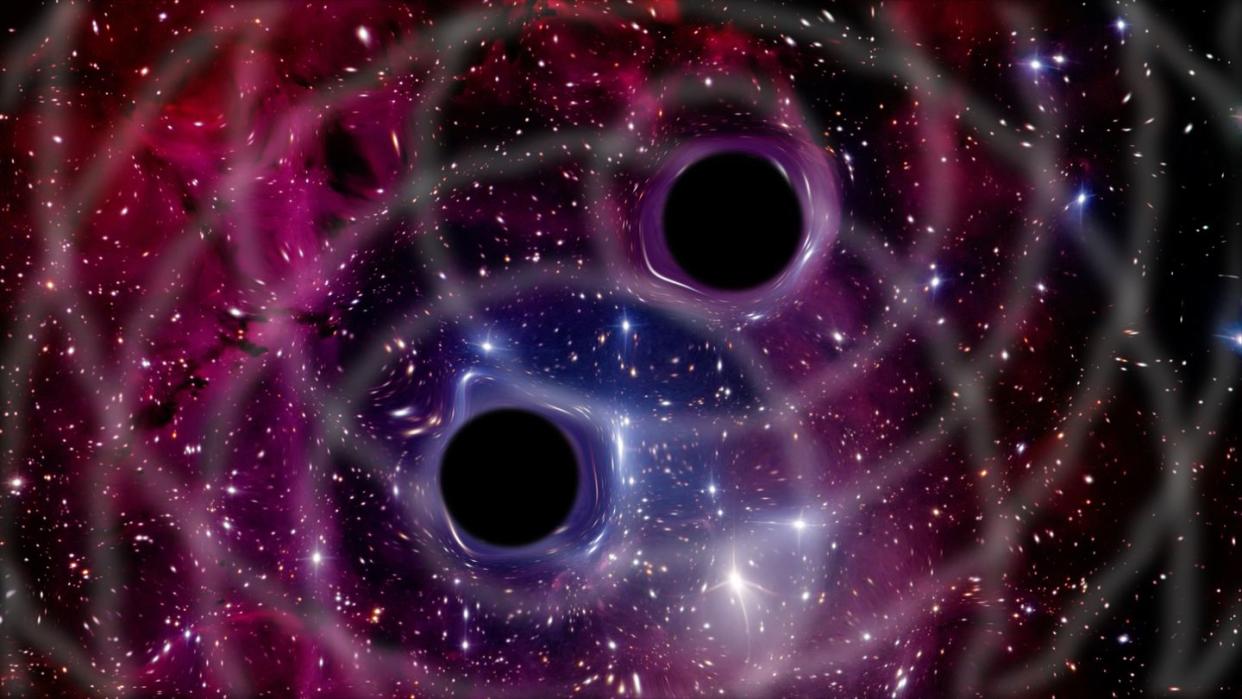Weird Supermassive Forces Are Making Black Holes Collide

Smaller black holes can meet and merge in the wake of supermassive black holes.
This may be because of the turbulence created by overlapping accretion disks and torque effects.
Supermassive black holes form the cores of many galaxies, including the Milky Way.
In new research, scientists analyze how supermassive black holes at the heart of many galaxies have influenced the way other black holes form. The spin and gravity generated by these monster black holes can force smaller black holes together in “traffic jams” that allow them to combine and grow larger. It’s one part Mario Kart sand pit and one part Katamari Damacy in the black hole traffic jam.
Supermassive black holes, including the one at the center of our own Milky Way, are millions or even billions the size of our Sun. They’re not super well understood, but they’re very, very old and inseparable from the galaxies they occupy. The Milky Way’s supermassive black hole, Sagittarius A*, likely played a part in how the galaxy’s spiral shape formed with its unfathomable gravity and directional rotation force known as torque.
Throughout the universe, there are “migration torques,” meaning places where rotational forces end up moving rogue objects toward the objects generating the torques. A flushing toilet is like a migration torque toward the drain. But these spots come in all strengths, the same way you can make a fun, but weak, whirlpool in a circular backyard pool by walking around its edges. That’s not gonna flush your toilet, but over a long time, it will gather up sediment from a larger overall area.
These torques, in space, contribute to black hole “traffic jams”. Supermassive black holes, also called active galactic nuclei, have disks of accreted (or accumulated) materials that orbits them. They also each have their own overall migration torque. Within the accretion disk area, there are other, far smaller black holes—stellar scale, as opposed to galaxy scale—and each of these has its own accretion disk. There’s a thermal reaction where all of these accretions mix, and apparently, it greatly increases the distance reached by the original migration torque. As a result, the researches call their hypothesized traffic jams “thermal torques.”
There’s an inflection point of different factors where thermal torques start to overtake regular gravitational torques inside the influence of a supermassive black hole. That turns a migration torque toward the supermassive black hole into a thermal migration torque that points outward. Something special is happening in the zones where the torque “flips” this way, and the researchers suggest is caused by the collision of accretion disks within the system. Imagine the chaos (and visible turbulence) produced if you did put a toilet flush in the middle of your backyard whirlpool.
So, within these zones of torque change—which, overall, may be more neutral for migration—the smaller black holes can be slowed by forces and then combined. Objects in motion are hard to pair off, but objects standing still can meet more easily. Then, they’re ready to be swept away together by the whirlpool of the thermal torque and migration torque.
If breaking down and studying all the overlapping gravities and other forces on the galaxy scale seems like an overwhelmingly large problem to you, you’re not alone. But scientists choose and study one small aspect at a time. This paper, for instance, focuses on the way thermal torque and migration torque affect each other under specific parameters in order to take just one step forward. The team said that their work illustrates one good guess as to how binary black holes meet and merge.
But this small piece must be woven into those larger and more complex intersections of many other factors as well—and that’s for the next 5 or 25 or 100 teams to explore.
You Might Also Like

